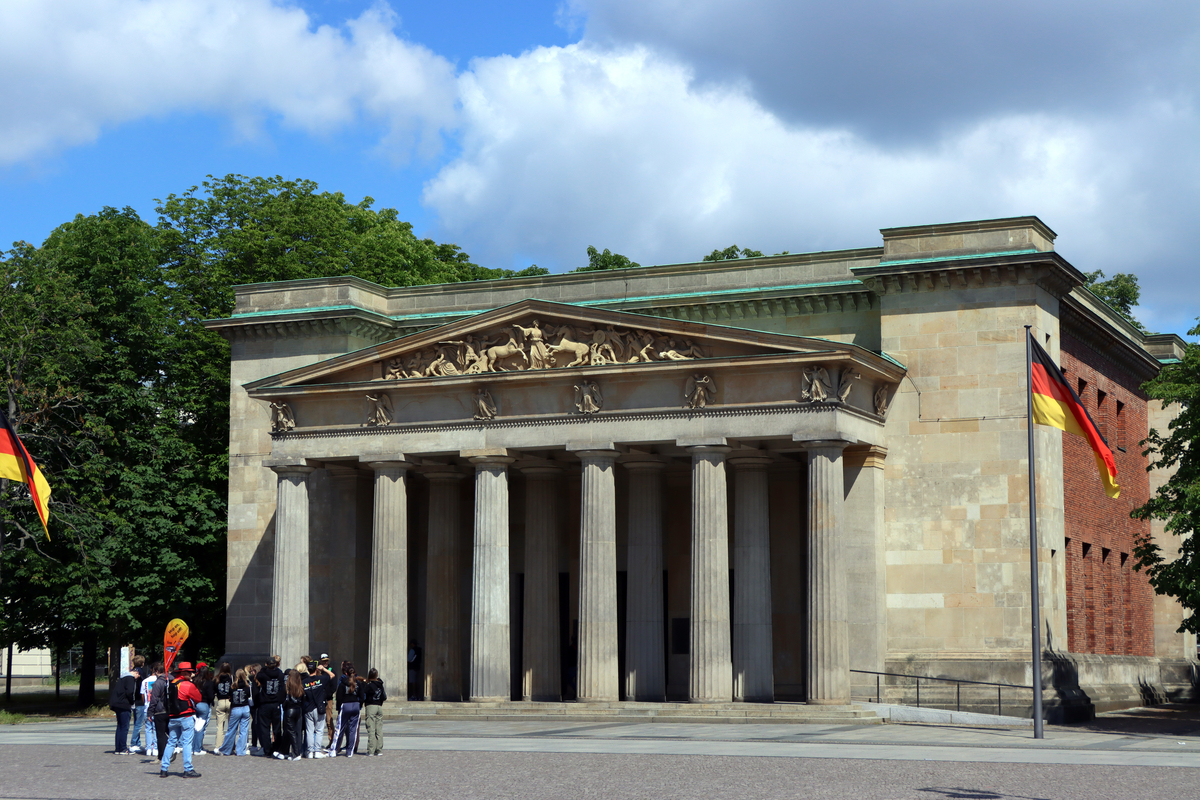Source

Source: High students in front of the Neue Wache Memorial, Berlin, May 2023. Imago/Panthermedia
The Neue Wache monument at the Unter den Linden boulevard reflects the development of Germany’s history and memory culture in the twentieth century. Built between 1816 and 1818 by Karl Friedrich Schinkel in the classicist style as a guardhouse for the Royal Palace, it served an important function in the mobilization and demobilization of troops during the First World War. In November 1918, revolutionary soldiers occupied the building. Following the suggestion of Prussian Prime Minister Otto Braun (SPD), Heinrich Tessenow redesigned the Neue Wache in 1931 as a memorial to the fallen soldiers of the Great War. It was destroyed during the Second World War, but the GDR government reconstructed the building in the 1950s and dedicated it as a monument for the victims of fascism and militarism. After unification, the Neue Wache was, once again, reconceptualized and redesigned at Helmut Kohl’s initiative. Despite considerable protests against the symbolic statement on the memorial that fails to differentiate between victims of National Socialism and perpetrators, in 1993 the memorial was dedicated as the Central Memorial of the Federal Republic of Germany to the Victims of War and Tyranny. It features an enlarged copy of a sculpture by Käthe Kollwitz, showing a grieving mother with her dead son.

Source: High students in front of the Neue Wache Memorial, Berlin, May 2023. Imago/Panthermedia
© Imago/Panthermedia